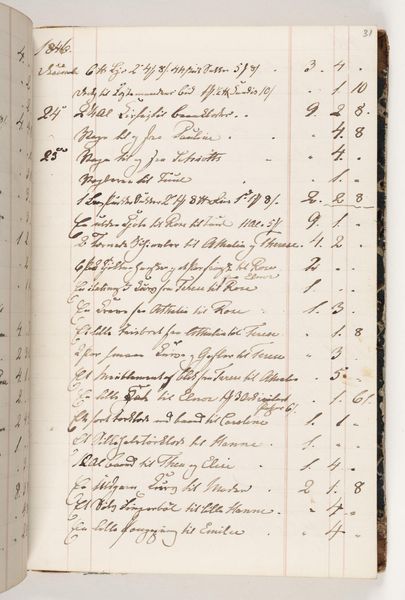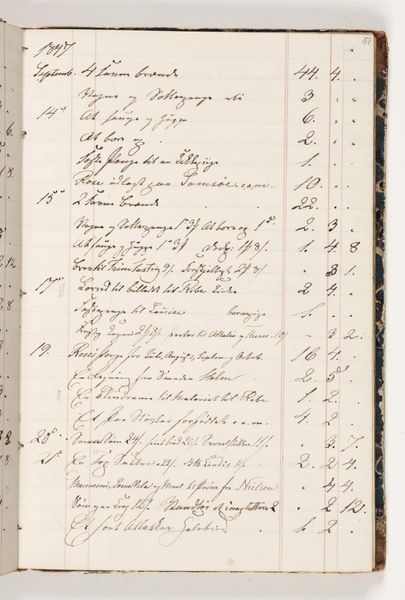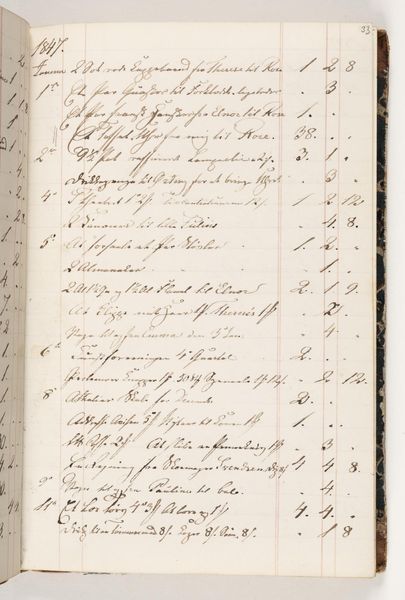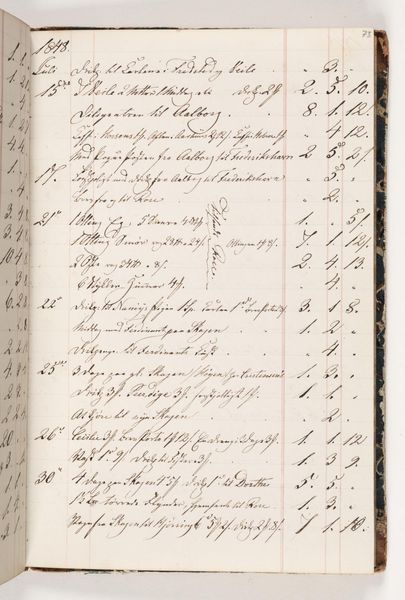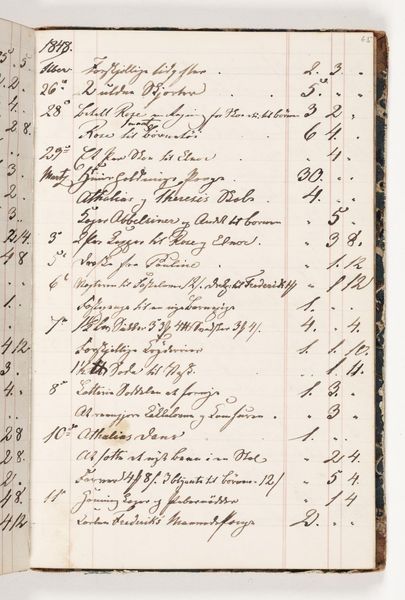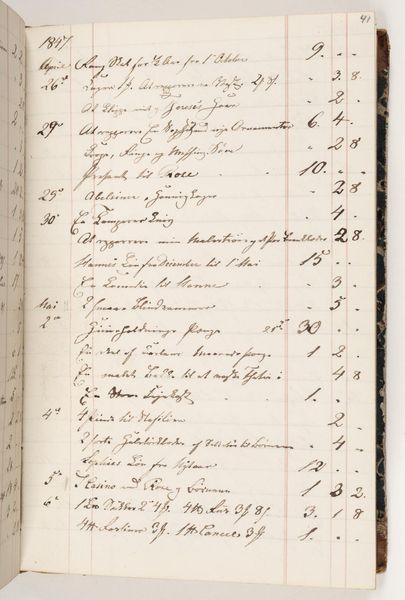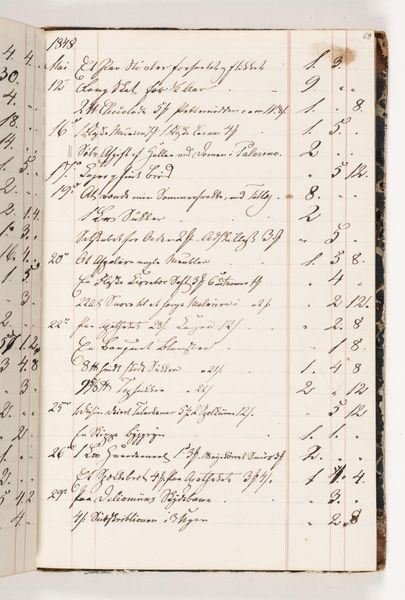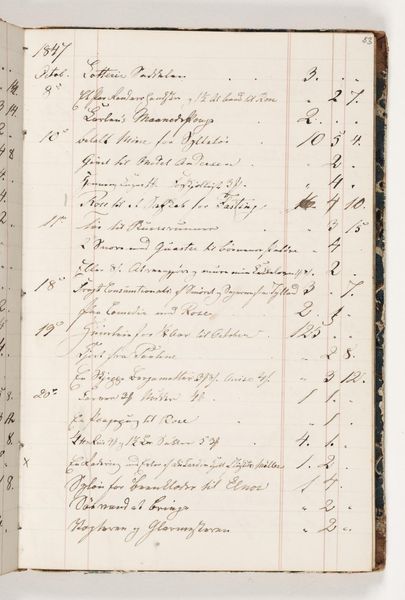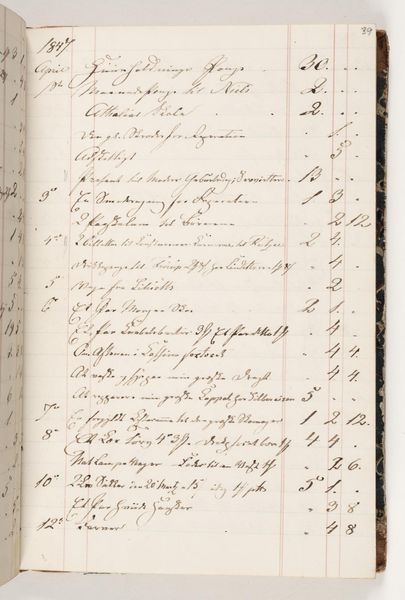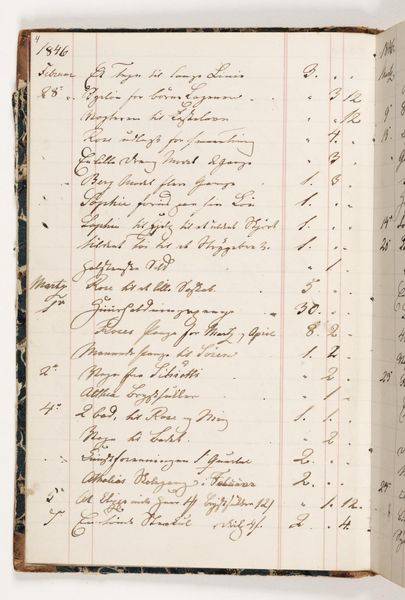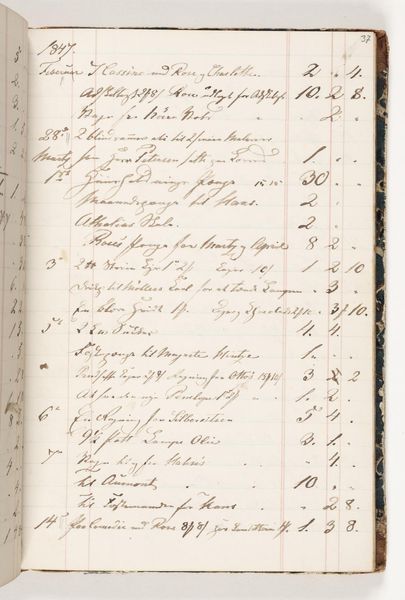
drawing, paper, ink
#
drawing
#
paper
#
ink
#
modernism
#
calligraphy
Dimensions: 200 mm (height) x 130 mm (width) (bladmaal)
Curator: Look at this delicate page. It's a piece entitled "Regnskab 1846," made that year, of course, by Martinus Rørbye. We have it here at the SMK. It's ink on paper, a seemingly simple drawing. Editor: It's more than just a drawing, isn't it? It's so dense, covered with these tight lines of script. It almost vibrates with the unseen effort, the painstaking recording. There's a feeling of intense focus locked into it. Curator: It is an account book. "Regnskab" means account. It’s quite revealing when we consider Rørbye's other work, celebrated for its depictions of grand architecture and sweeping landscapes of the Orient. Here, he meticulously documents everyday financial transactions. Editor: It challenges this idea of the grand Romantic artist. And look at how the ink bleeds into the paper in places, softening the rigid columns of figures. Does that unintentional effect soften our perception of cold, hard currency and fiscal responsibility, then? Curator: Perhaps, or it heightens it. The rigid structure he adheres to with each carefully lettered stroke provides order. This reveals how even personal bookkeeping reflected societal demands and constraints. Bureaucracy, even in its early stages, affected artistic practice, becoming an unconscious aspect. Editor: But there's also an inherent intimacy. It's the artist’s own hand creating the order—or perhaps reflecting an existing system? Knowing the accounts are kept with such beautiful strokes of ink somehow highlights that these were expenses, earnings and maybe even acts of generosity and exchange. Curator: Exactly! And it's exhibited now. In the 21st century. Removed from that personal function, "Regnskab" reminds us that every piece of art—even an accounting ledger—exists within layers of meaning shaped by cultural contexts, display decisions, and viewers' interpretations. It reminds us to consider whose stories get told and how. Editor: I'm stuck by how something so seemingly ordinary holds a quiet beauty. Its purpose becomes a ghostly echo—financial exchanges distilled into a kind of abstract art. A visual document that still holds whispers, wouldn't you say?
Comments
No comments
Be the first to comment and join the conversation on the ultimate creative platform.
